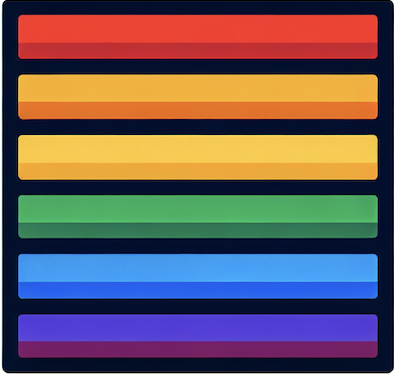History of...(text analysis - intermediate)

The Pride flag, also known as the Rainbow flag, is a symbol of the LGBTQ+ community and has a rich history that dates back to the 1970s. The flag was created by Gilbert Baker, an artist, and gay rights activist, in 1978. Baker was asked by Harvey Milk, one of the first openly gay elected officials in the United States, to create a symbol for the gay community that could be used in the upcoming San Francisco Gay Freedom Day Parade.
The original flag had eight stripes, each with its own meaning. The colors were hot pink for sex, red for life, orange for healing, yellow for sunlight, green for nature, turquoise for magic and art, indigo for serenity, and violet for spirit. Due to production issues, the hot pink stripe was removed, and the turquoise stripe was later replaced with royal blue, resulting in the six-striped flag that is commonly used today.
The flag quickly became a symbol of pride and unity for the LGBTQ+ community. It was first used in the San Francisco Gay Freedom Day Parade on June 25, 1978, and it has since been used in Pride parades and events all over the world. The flag is often seen as a symbol of acceptance and inclusivity, and it has become an important part of LGBTQ+ culture.
In 2015, the Museum of Modern Art in New York City added the Rainbow flag to its design collection, recognizing its significance as a symbol of social change. The flag has also been adapted and modified by various groups within the LGBTQ+ community, with different variations representing different identities, such as the Bisexual Pride flag, the Transgender Pride flag, and the Intersex Pride flag.
The Pride flag is more than just a colorful banner; it represents the struggles and triumphs of the LGBTQ+ community. It is a symbol of hope, love, and acceptance, and it continues to be an important part of the fight for equality and justice for all.
